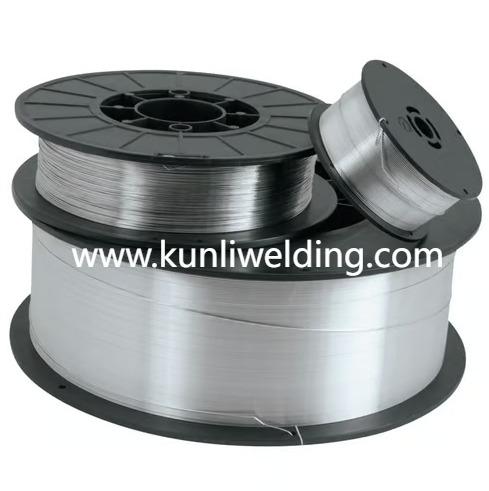As coastal economies expand and infrastructure projects such as offshore platforms and energy installations attract attention, material durability becomes a commercial and safety priority. Aluminum Welding Wire ER5087 often appears in specification discussions for welded assemblies that must withstand salt air and humid environments, because its weld metal behavior contributes to predictable in service performance.
Corrosion resistance in aluminum welds starts with chemistry and ends with the protective film the metal forms. Certain filler wires are formulated so that, when deposited and cooled, the weld metal tends to create a stable surface layer that slows further reaction with the environment. That passive layer acts like a skin on the metal, limiting how quickly aggressive agents reach the bulk material beneath. In service, a robust passive film reduces the pace of pitting and helps maintain electrical continuity in structural and conductive paths.
ER5087's formulation influences how that passive film develops. Alloying elements present in the wire alter how the weld pool solidifies and how microstructure forms at the cooling stage. These microstructural features in the deposited metal affect local electrochemical behavior. Where microstructure promotes uniform surface conditions and avoids vulnerable intermetallic clusters, the welded seam shows fewer initiation points for localized attack. In practice that translates into fewer surprise repairs and longer intervals between scheduled inspections.
Compatibility with base alloys and coatings matters too. When a weld metal matches the corrosion tendencies of the parent material, galvanic differences at the joint are minimized. That reduces the risk that one region corrodes preferentially when two dissimilar metals are in close contact. Similarly, a filler that accepts standard surface protection methods without undermining adhesion helps fabricators complete a single finishing workflow that protects both parent and weld zones. For large scale projects this alignment reduces rework at the coating stage and keeps maintenance planning straightforward.
Fabrication technique and cleanliness are equally important to long term performance. Contaminants on joint surfaces such as oils or residues interfere with passive film formation and can create small sites where corrosion begins. A consistent cleaning routine and careful fit up help the deposited metal behave as intended. Shielding gas stability during welding also affects surface appearance and microstructure; when gas delivery is steady, welds exhibit fewer surface defects that later act as initiation points for corrosion.
Weld geometry and heat input shape the heat affected zone which often plays a central role in service behavior. Too much concentrated heat can alter microstructure unfavorably or create tensile residual stresses that make an area more susceptible to cracking under cyclic loads. Controlling heat input with appropriate travel speed and sequencing reduces those risks and supports a more uniform microstructure across the joint and the adjacent metal.
Inspection and maintenance practices that reflect expected exposure make a big difference. Visual checks for coating adhesion, simple crevice inspections at joints, and periodic non destructive scans on critical load bearing parts let teams detect early signs of localized attack. Documenting coil lot marking and pilot weld results at receipt also helps correlate any field observations with specific batches so corrective actions can be targeted rather than sweeping.
Procurement and supplier collaboration accelerate reliable outcomes on large programs. Suppliers that publish handling guidance, recommended parameters, and packaging specs give shops a practical starting point for pilot tests. Staged acceptance and clear traceability mean that if a batch shows unexpected behavior the response can be fast and evidence based. For projects where downtime or repair access is costly, that procedural clarity reduces overall program risk.
Current market attention to offshore wind, coastal infrastructure upgrades and resilient energy systems highlights the importance of materials that hold up in salt air and humidity. Materials that form stable passive films and weld deposits that accept coatings tend to reduce long term maintenance burden. When engineering teams pair an appropriate filler like ER5087 with good shop practice and a coherent inspection regime, assemblies withstand maritime exposure with fewer interventions.
Finally, the choice of filler is one piece of a broader durability strategy. Match filler performance to base material and coating plans, set realistic inspection cycles based on exposure severity, and keep pilot evidence and spool traceability on file. That combined approach turns material selection from a theoretical exercise into an operational plan that protects assets over years of service.
To review technical notes and product information that help define pilot tests and acceptance criteria for welded assemblies, consult the available materials on supplier pages. A practical resource for product guidance and application notes can be found at www.kunliwelding.com which includes material on ER5087 and related handling guidance useful for shop level trials and specification writing.
